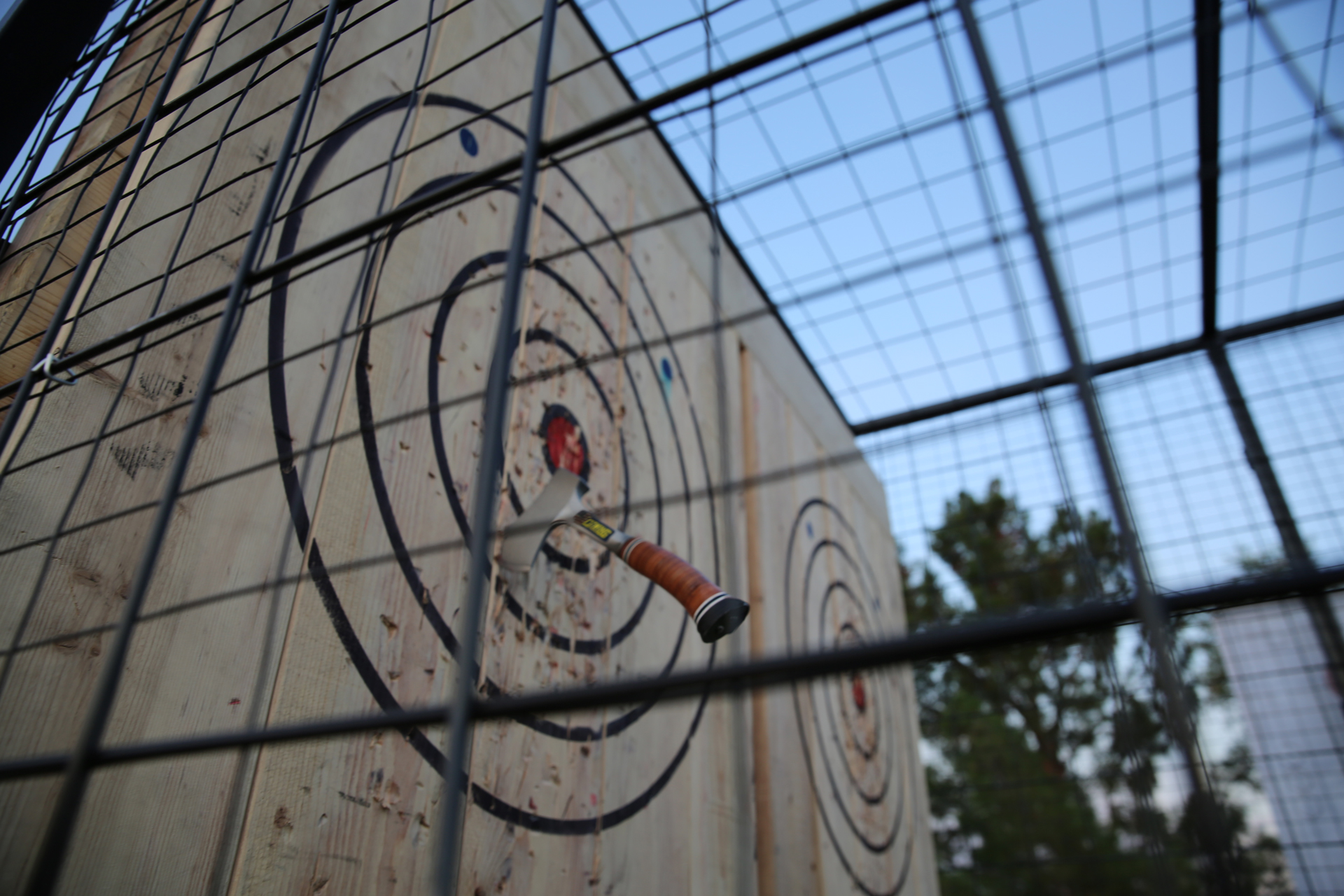Axe throwing has evolved from a niche hobby to a popular recreational activity enjoyed by people of all ages. Whether you’re a casual enthusiast or a seasoned pro, there’s always room to improve your axe throwing skills and take your game to the next level. In this comprehensive guide, we’ll explore the strategies, techniques, and mindset required to elevate your axe throwing prowess from hobbyist to pro status. Get ready to sharpen your skills, hone your technique, and unleash your inner axe throwing champion!
Understanding the Basics
Before we delve into advanced techniques, it’s essential to master the fundamentals of axe throwing. Familiarize yourself with the basic components of an axe, including the handle, head, and blade. Practice gripping the axe firmly and adopting the correct throwing stance. Start with a lightweight axe to get a feel for the throwing motion before progressing to heavier models.
Perfecting Your Grip and Stance
A solid grip and stance are the foundation of successful axe throwing. Grip the axe handle firmly with your dominant hand, positioning it near the base of the handle. Your non-dominant hand should support the axe near the head, providing stability and control. Adopt a balanced stance with your feet shoulder-width apart, facing the target. Keep your body relaxed and your shoulders square to the target to maintain stability throughout the throwing motion.
Mastering the Throwing Motion
The key to accurate axe throwing lies in mastering the throwing motion. Start by bringing the axe back behind your head in a smooth, controlled motion. Shift your weight onto your back foot as you prepare to release the axe. As you bring the axe forward, transfer your weight onto your front foot and follow through with your throw. Aim for a fluid, consistent motion, keeping your arm straight and your wrist firm to ensure a clean release.
Finding Your Target
Achieving precision in axe throwing requires keen focus and target awareness. Identify a specific point on the target to aim for, such as the bullseye or a distinct marker. Visualize your throw hitting the target before releasing the axe, maintaining unwavering focus throughout the throwing process. With practice, you’ll develop a sense of spatial awareness and distance judgment, allowing you to adjust your aim for optimal accuracy.
Understanding Rotation and Distance
Controlling the rotation and distance of the axe is essential for hitting your target consistently. Experiment with different throwing techniques to find the optimal amount of rotation for your throws. A slight over rotation can cause the axe to bounce off the target, while too little rotation may result in the axe falling short. Likewise, adjusting the distance between yourself and the target can affect the trajectory of your throw. Aim to find the sweet spot where the axe rotates smoothly and lands squarely on the target.
Developing Consistency and Accuracy
Consistency is the hallmark of a skilled axe thrower. Focus on developing a consistent throwing motion and release point, aiming for repeatability with each throw. Practice regularly to refine your technique and build muscle memory. Pay attention to the subtle nuances of your throws, making adjustments as needed to improve accuracy. With dedication and perseverance, you’ll develop the consistency and precision required to hit your target with pinpoint accuracy every time.
Transitioning to Advanced Techniques
Once you’ve mastered the basics, it’s time to explore advanced axe throwing techniques. Experiment with different grip styles, throwing angles, and spin techniques to add versatility to your throwing repertoire. Challenge yourself with trick shots and precision throws, such as double spins or underhand throws. Push the boundaries of your skills and embrace the thrill of mastering new techniques.
Maintaining Safety and Responsibility
As you progress from hobbyist to pro, it’s crucial to prioritize safety and responsibility at all times. Respect the rules and guidelines of the axe throwing facility, including safety protocols and etiquette. Always inspect your equipment before each session and ensure that the throwing area is clear of obstacles and bystanders. Never throw axes under the influence of alcohol or drugs, and always follow the instructions of trained instructors.
Conclusion
With dedication, practice, and a commitment to continuous improvement, anyone can become a master axe thrower. Whether you’re honing your skills for competition or simply seeking personal fulfillment, the journey from hobbyist to pro is as rewarding as it is exhilarating. Follow the strategies and techniques outlined in this guide, and embark on a thrilling adventure that will take your axe throwing skills to new heights. So grab your axe, step up to the throwing line, and let the journey begin!

